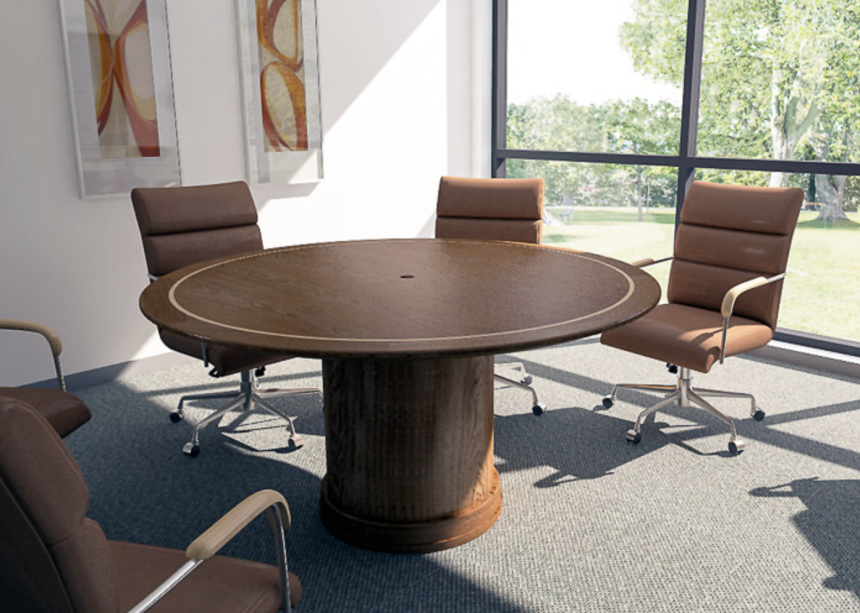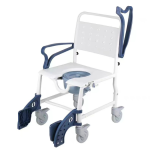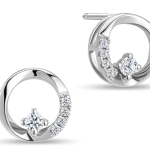Whether prefabricated, on-the-floor stock conference tables or customized artisan furniture, your choice of shape and size can greatly impact productivity. From a U-shape to a boat-shaped to a horseshoe, the right table helps colleagues feel like equals and encourages participation.
Long rectangular conference tables with rounded corners often convey a sense of hierarchy and power distance between the head and those seated along the sides. However, round and oval conference tables promote collaboration and collect input from everyone in attendance.
Better Sightlines
Business owners rely on conference tables to communicate ideas, discuss projects and make critical decisions. Companies often invest in custom conference furniture to reflect their unique corporate values and enhance the productivity of meetings. While most conference rooms have standard rectangular and racetrack tables, a circular table can significantly benefit your company’s meetings.
A round conference table promotes a sense of togetherness and equality among colleagues, unlike long rectangular ones that can create an imbalance of power. The fact that there is no single head at the table makes guests feel valued and involved in the meeting and can lead to better critical thinking or collaborative problem-solving sessions.
Additionally, curved conference tables allow seamless interaction with other participants without straining the neck or back. In addition, the rounded design allows everyone to see each other’s faces and body language, which can help to improve group decision-making. This can be especially beneficial for teams who work on collaborative projects that require communication and teamwork. A long table can also prevent guests from viewing presentations without a projector, requiring them to turn their heads to the side or look around the table’s edge.
Aesthetics
Regarding events and conferences, a few presentation types are considered staples. A noteworthy speaker or leader delivers the keynote speech. There are panel discussions in which multiple experts within a certain field share their knowledge of the subject matter with the audience. But one type of presentation that often goes overlooked is the roundtable discussion.
While functionality is a top priority when selecting conference tables, aesthetics also play an important role. A beautiful table that matches your office’s décor can add to your meeting space’s overall look and feel, creating a professional and polished atmosphere during meetings with clients or employees.
When choosing a conference table, consider the shape and finish of the top to determine which option will best suit your needs. For example, a round tabletop works well in many spaces that cannot accommodate long rectangular conference tables, which are more common in offices and boardrooms. In addition, round conference tables don’t have any sharp edges that may harm children or pets who might wander over the edge.
More Comfort
When choosing conference tables, many business managers are concerned about being able to seat everyone comfortably. This is especially true for businesses that host events with many participants. Round tables allow more people to fit around a table without feeling like they are being packed in sardines.
Additionally, because no single spot is designated as the leader of a round table, attendees feel more included and important to the conversation. This can encourage honest discussions rich with valuable information and anecdotes.
Round conference tables can be found in various lengths to suit the needs of different meeting contexts. They can also be paired with training tables to create modular workspaces that best use space in your conference room. Some common length sizes for round conference tables include 72″, 84″ and 96″. Other options for conference tables shape include boat-shaped, racetrack and rectangular. These different shapes can be purchased with ganging hardware to enable a more customizable layout for your conference room.
Easier to Clean
The conference table is a critical piece of furniture in any workspace and should be well-maintained to ensure it continues to serve its purpose. Aside from providing it is functional for meetings, brainstorming sessions and more, the conference table should also complement the aesthetics of the meeting room to create a cohesive look and feel.
Although many enthusiastic business managers opt for the traditional rectangular-shaped conference table, exploring the different shapes and designs available may reveal a better style for your team. For example, a boat-shaped conference table has a wider middle and tapers on both ends to help everyone get clear sight lines during presentations and slideshows.
On the other hand, a round conference table allows colleagues seated a few seats away to engage in conversation without crushing their necks. Additionally, a circular design makes reaching the chair directly in front of you easier, making it more comfortable to participate in and preventing the ‘crowding effect’ common at rectangular tables. This can encourage more collaborative input, and it helps prevent the leader from taking a ‘command and control’ stance that may stifle creativity and hinder productivity.
More Space
Having the right conference table can make all the difference in how well your office runs. Whether you’re a law firm hosting a meeting with clients, a college library collaborating on student projects, or an IT company holding budgeting meetings, a well-organized gathering space is essential.
One problem with long rectangular and u-shaped conference tables is that they can create a sense of isolation for people sitting at the far end. This is because they can feel left out of the discussion and need help seeing what other attendees are saying.
Round conference tables help mitigate this issue because they are more sociable and encourage people to talk with one another. Plus, the circular design allows you to fit more people around a table while allowing everyone to get comfortable and work on their laptops or notepads. This makes them a great option for small rooms or spaces that wouldn’t accommodate a large rectangular table. This lets you get more people involved in important meetings, so your business can achieve its goals.
Lynn Martelli is an editor at Readability. She received her MFA in Creative Writing from Antioch University and has worked as an editor for over 10 years. Lynn has edited a wide variety of books, including fiction, non-fiction, memoirs, and more. In her free time, Lynn enjoys reading, writing, and spending time with her family and friends.















